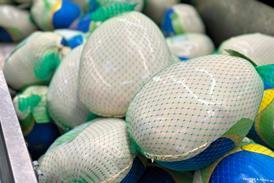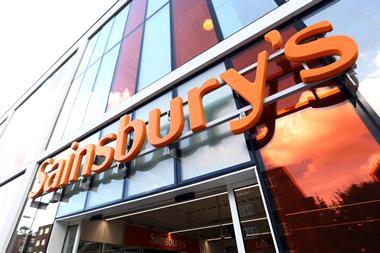For small suppliers, breaking into the multiples can be a daunting prospect. First there's that initial meeting with the buyer. Then you have to win the listing. Finally, you have to drive sales.
The dreaded delist is something many small suppliers succumb to. The step from small local operator to national supplier is huge, and many brands find themselves out of their depth. For every Innocent Drinks, Green & Black's or Tyrrells crisps, there will be 20 others who fall by the wayside.
"Products are delisted for three main reasons," says Nick Orledge, a small supplier consultant who worked as a Tesco buyer for 10 years. "There's no consumer demand, there's a supply chain issue or a competitor has a better proposition."
The good news is there are several things you can do to extend your brand's shelf life. The bad news is there are no short cuts, and it will take a lot of time and money. "People seriously underestimate what it actually costs to deal with the multiples," says Simon Dunn, MD at fmcg consultancy Product Chain.
Take Square Pie, a London-based premium pie manufacturer with six branded outlets in the capital. Last May it won space in 71 Sainsbury's stores, and had many pundits proclaiming it one of the hottest brands to watch. Just five months later it was removed from shelves, leaving founder Martin Dewey scratching his head. He said at the time: "We underestimated the amount of financial support we needed for the launch. It was just too soon for us."
Others fall victim to what has been dubbed 'buyer's logic'. The London Cuppa, a premium tea brand, had been supplying 174 Sainsbury's stores with its tea for four years when it was delisted. Philip Philippou, MD, says: "The buyer said we weren't selling enough units per week. But he was comparing us with another brand that was in all their stores, and taking an average. I said, you have to compare us on a store-by-store basis otherwise the figures just don't work. But he didn't listen."
Babylicious, one of the frozen aisle's few successes of late, has also been subject to some puzzling comparisons, says founder Sally Preston. The frozen babyfood product was delisted from Tesco in 2006 after the buyer compared Babylicious sales data with sales of frozen lasagne, targeted at adults. After much haranguing from Preston, the buyer was persuaded to relist the product. But then last year Sainsbury's also delisted the brand, again comparing her sales with frozen ready meals.
Although this can be frustrating for niche suppliers, Orledge says the buyer was just making the most profitable use of the space. And that is the key to maintaining your buyer's confidence. "If you can demonstrate a marketing plan that is focused on driving the rate of sale, that's what the whole business is about," says Dunn. "Without the marketing it's not worth bothering."
That means being willing to offer multibuys and bogofs, particularly in the early stages. It means investing in great packaging and in-store merchandising. "The best things a small supplier can do is make sure the labelling screams why we can charge more for it," says Tesco's head of local sourcing, Emily Shamma.
And you need to pay someone, or take time out yourself, to check that all those things are actually happening, and working, in-store. "It's your responsibility to check how you're performing and how you can perform better," says Hillary Graves, MD at Little Dish, which supplies Tesco, Sainsbury's and Waitrose with ready meals for toddlers. "You need to make sure you look fantastic on shelf. The retailers don't like it, but I've been in 75% of our stores to make sure we're in stock and looking great."
This all helps establish a good relationship with your buyer. Although they have reputations as hard-nosed bullies, buyers are in fact just good at their jobs. "Buyers are professional negotiators," says Orledge. "They are trained on how to focus on certain points, how to deflect and challenge. Small suppliers don't have the same skills."
The hard work starts before suppliers even set up that first meeting. As well as setting up your facility, getting the health and safety accreditations and putting a marketing plan together, you need to do your research. "You need to know the consumer really well. You need to know your market data and where that market is going. And you have to understand the multiple you are presenting to," says Orledge.
Even if things go well to start off with, sometimes you just get unlucky. Stuart Hepworth is an entrepreneur who invented Crusty Crock Pots in the 1990s, bread bowls marketed as "edible vehicles" into which you could put soup or salads. Six months into a listing with Safeway the product was pulled. "Our sales slumped when the summer hit, but our buyer also got sideways promoted, and the new buyer pulled the plug because it wasn't his baby."
Buyer rotation often causes problems with relationship building. Lynette Sinclair at Tideford Organic Foods says the lack of buyer turnover at Waitrose was what allowed them to establish themselves. "If your buyer is changing all the time your performance is judged very quickly, and the next person may have different criteria."
But if you can demonstrate to each new buyer that your product will sell, there won't be a problem. In any case, it's never personal. "Manufacturers forget that when they win a listing, they have often themselves replaced another manufacturer's product," says Orledge. "Be passionate about your brand but don't be so precious that you lose sight of the bigger picture. If others are doing things better, learn from them while staying true to your roots. That is the fine line between success and failure."nTips from Tesco
Tesco has eight regional sourcing hubs around the UK, each with a buyer, a marketing manager and a technical manager from the area. Emily Shamma, Tesco's head of local sourcing, explains how small brands can get a look in.
"Small suppliers can contact our regional buyers directly or go through our website. We also host roadshows. Last year we met 500 small suppliers and are currently working with 100 of them.
"Firstly we look at the product, determine its quality and especially consider its provenance. Why would a consumer choose this over another product? It has to be really clear what makes the product special. If we like it, we go and see the supplier to see where technical improvements could be made, such as food hazard training. In bakery, for example, we need to make sure it has metal detection installed. It often takes two months from the first meeting to getting on shelf, longer if a lot of hand-holding is required, and we have to tie the launch in with our own merchandising twice a year in each category.
"We like the supplier to go into all the stores in their county at the start. If it's a roaring success it is tempting to go further, but then problems can occur if the brand isn't well known, or if the volumes become difficult. So we move cautiously.
"An example of a great small supplier we're working with is Moors apple juice in Kent. Both the apple and pear juices have been a real hit with us. We helped redesign the label for them to make the Kent provenance clearer, but the facilities were great and we launched the product in 50 Kent stores last year. It looks very promising."













No comments yet